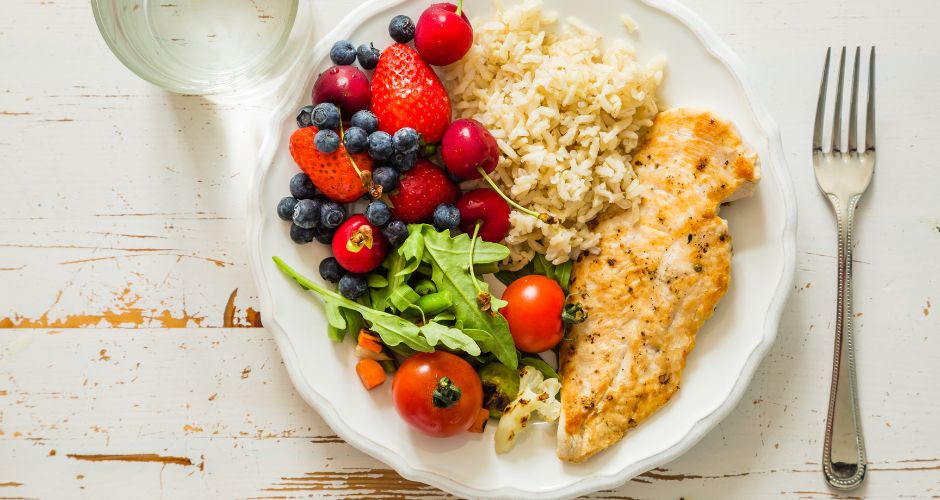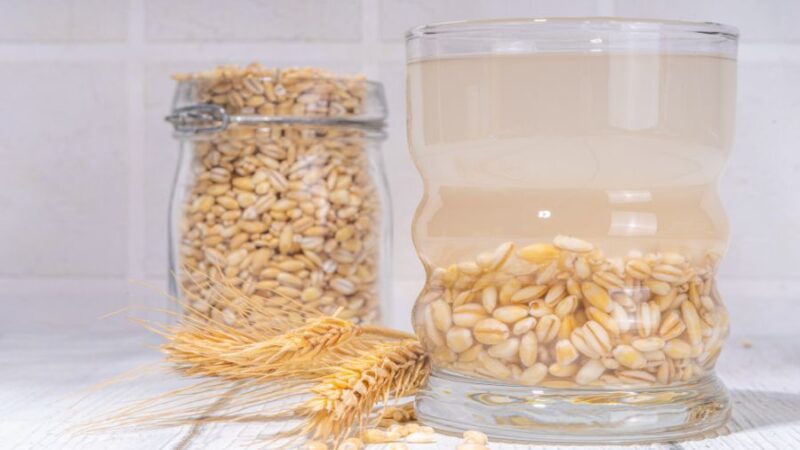Does Portion Control Really Work for Weight Loss

In the grand symphony of weight loss strategies, portion control takes center stage as a compelling and achievable melody. We’ve all been there – navigating the labyrinth of diets, counting calories, and searching for that elusive formula to shed those extra pounds. But is the answer as simple as managing the size of our servings?
In this blog, we delve into the world of portion control, examining its definition, the science supporting its effectiveness, the numerous benefits it offers, and practical tips for incorporating it into your daily life. Let’s unravel the truth behind whether portion control is the key to successful weight loss.
What is Portion Control?
At its core, portion control is about managing the amount of food you eat in a single serving. It doesn’t involve restrictive diets but rather focuses on understanding and moderating the quantities on your plate. This approach emphasizes the quality of your food choices and promotes a mindful relationship with eating.
Science Behind Portion Control
To truly appreciate the impact of portion control for weight loss, it’s essential to grasp the science behind it. Research consistently supports the idea that controlling portion sizes plays a pivotal role in weight management. By aligning your food intake with your body’s energy needs, you create a calorie balance that supports weight loss or maintenance. This section will explore the intricate relationship between portion control, calorie intake, and metabolism.
Does Portion Control Really Work for Weight Loss

Portion control, the practice of managing the quantity of food you consume in a single serving, goes beyond just counting calories. It is a holistic approach to eating that offers a myriad of benefits for your overall well-being. Here’s a closer look at the advantages of incorporating portion control for weight loss into your lifestyle:
| Calorie Regulation | Portion control aligns food intake with energy needs, crucial for weight management and supporting weight loss goals. |
| Prevents Overeating | Understanding and moderating portion sizes reduces the risk of overeating, particularly in cultures with prevalent larger portions, helping to avoid excess calorie consumption. |
| Supports Weight Loss | Consistent portion control creates a sustainable calorie deficit, a key factor in effective weight loss. |
| Promotes Mindful Eating | Portion control encourages mindful eating, fostering a healthier relationship with food by being fully present and engaged during meals. |
| Balances Nutrient Intake | Controlling portions ensures a balanced distribution of nutrients in the diet, providing a variety of essential vitamins and minerals without relying excessively on any single food group. |
| Improves Digestion | Consuming moderate portions supports better digestion, preventing discomfort, bloating, and indigestion associated with overeating. |
| Enhances Energy Levels | Maintaining balanced portion sizes throughout the day provides a steady supply of energy, preventing spikes and crashes associated with erratic eating patterns. |
| Teaches Portion Awareness | Portion control helps develop awareness of appropriate serving sizes, aiding in making informed food choices both at home and when dining out. |
| Cultivates Healthy Habits | Incorporating portion control into daily routines cultivates healthy eating habits, contributing to long-term well-being and enabling the passing on of these habits to future generations. |
| Prevents Nutrient Deficiency | Avoiding excessive portions reduces the risk of nutrient deficiencies, encouraging a diverse and well-rounded diet that meets the body’s nutritional requirements. |
| Supports Weight Maintenance | Beyond weight loss, portion control is instrumental in weight maintenance, providing tools for sustaining a healthy weight once goals are achieved. |
| Flexible Approach to Eating | Portion control allows flexibility in food choices, accommodating various dietary preferences and making the overall eating experience more enjoyable and sustainable compared to strict dieting. |
Tips for Portion Control
Portion control is a powerful tool for managing your weight and promoting overall health. Here are practical tips to help you master the art of portion control for weight loss and foster a balanced approach to eating:
| Use Smaller Plates | Opt for smaller plates to create the illusion of a fuller plate, helping control portion sizes without feeling deprived psychologically. |
| Measure Serving Sizes | Familiarize yourself with standard serving sizes using measuring cups, a food scale, or visual references to enhance portion awareness. |
| Fill Half Your Plate with Vegetables | Allocate a significant portion of your plate to vegetables, promoting satiety with low-calorie, nutrient-dense options. |
| Practice the Plate Method | Divide your plate into sections: one-half for vegetables, one-quarter for protein, and one-quarter for carbohydrates, simplifying portion control for balanced meals. |
| Avoid Eating from Containers | Serve food on a plate rather than eating directly from containers or bags to gauge portions more accurately. |
| Listen to Your Body | Pay attention to hunger and fullness cues, eat slowly, and stop when satisfied to prevent overeating and promote a mindful approach. |
| Understand Restaurant Portions | Be mindful of often larger restaurant portions; consider sharing or packing half for later before starting your meal. |
| Pre-Portion Snacks | Divide snacks into individual portions, especially for items like nuts or chips, to avoid mindless eating and better manage quantity. |
| Limit Liquid Calories | Be mindful of liquid calories from sodas, juices, and high-calorie drinks; opt for water or low-calorie options to manage overall calorie intake. |
| Start with Smaller Servings | Begin with smaller portions and allow for seconds if needed to prevent overloading your plate initially. |
| Be Wary of Second Servings | Pause before reaching for a second helping, checking in with hunger to assess whether additional food is genuinely needed. |
| Choose Nutrient-Dense Foods | Prioritize foods rich in essential nutrients without excessive calories for overall health and well-being. |
| Plan Balanced Meals | Plan meals that include a variety of food groups to ensure a balanced array of nutrients and prevent overemphasizing any single category. |
| Pack Your Lunch | Prepare and pack your lunch to have better control over portion sizes and choose nutritious options aligned with health goals. |
| Avoid Eating in Front of Screens | Minimize distractions by avoiding screens while eating to encourage mindful eating and tuning into your body’s signals. |
| Share Desserts | When indulging in dessert, consider sharing with others to enjoy a taste without consuming a full portion. |
| Be Mindful of Condiments | Pay attention to the use of condiments, dressings, and sauces, using them in moderation as they can contribute additional calories. |
| Stay Hydrated | Drink water throughout the day to stay hydrated, as feelings of hunger can sometimes be signs of dehydration. |
Q1: What is portion control, and why is it important?
A1: Portion control involves managing the amount of food you eat to align with your body’s energy needs. It’s crucial for weight management and preventing overeating, supporting overall health and well-being.
Q2: How can using smaller plates help with portion control?
A2: Using smaller plates creates the illusion of a fuller plate, which can psychologically satisfy your perception of a meal, helping control portion sizes without feeling deprived.
Q3: How can I measure serving sizes effectively?
A3: Familiarize yourself with standard serving sizes using measuring cups, a food scale, or visual references. This practice enhances portion awareness and promotes more accurate measurements.
Q4: Why is filling half the plate with vegetables recommended for portion control?
A4: Vegetables are nutrient-dense and low in calories, promoting satiety without excess calories. Allocating a significant portion of your plate to vegetables helps control overall calorie intake.
Q5: What is the Plate Method, and how does it simplify portion control?
A5: The Plate Method involves dividing your plate into sections: one-half for vegetables, one-quarter for protein, and one-quarter for carbohydrates. This method simplifies portion control for balanced meals.
Q6: How does mindful eating contribute to portion control?
A6: Mindful eating involves paying attention to hunger and fullness cues, eating slowly, and stopping when satisfied. This approach prevents overeating and supports effective portion control.
Q7: Why should I avoid eating directly from containers?
A7: Serving food on a plate instead of eating from containers helps gauge portions more accurately, reducing the risk of mindless overeating.
Q8: How can I navigate portion control when dining out?
A8: Be mindful of restaurant portions, which are often larger than necessary. Consider sharing a dish or packing half for later before starting your meal.
Q9: Why is it important to be aware of liquid calories for portion control?
A9: Liquid calories from beverages like sodas and juices can contribute to overall calorie intake. Opt for water or other low-calorie options to manage your calorie consumption effectively.
Q10: How can I develop healthy portion control habits for the long term?
A10: Develop healthy habits by starting with smaller portions, being mindful of second servings, choosing nutrient-dense foods, planning balanced meals, and staying hydrated. Consistency is key for long-term success in portion control.







One thought on “Does Portion Control Really Work for Weight Loss”